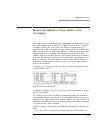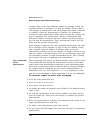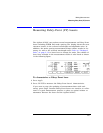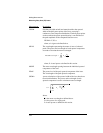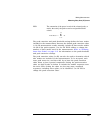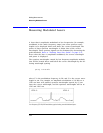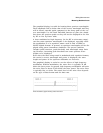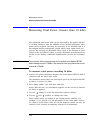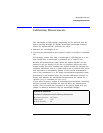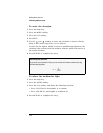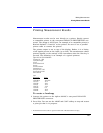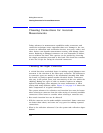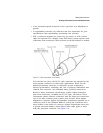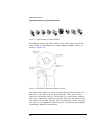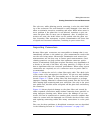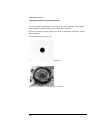
2-37
Making Measurements
Calibrating Measurements
Calibrating Measurements
The wavelength of light changes depending on the material that the
light is passing through. To display meaningful wavelength measure-
ments, the Agilent 86120C performs two steps:
1 Measures the wavelength in air.
2 Converts the wavelength to show values in either a vacuum or “standard
air”.
For example, a laser line with a wavelength of 1550.000 nm in a vac-
uum would have a wavelength in standard air of 1549.577 nm.
Because all measurements made inside the Agilent 86120C are per-
formed in air, the density of air, due to elevation, affects the wave-
length results. You must calibrate the Agilent 86120C by entering the
elevation. Elevations from 0 to 5000 meters can be entered. The eleva-
tion correction is immediately applied to the current measurement
even if the instrument is in the single measurement acquisition mode.
Annotation on the display shows the current calibration elevation in
meters and whether the wavelength measurements are shown for a
vacuum (VAC) or standard air (STD AIR).
If you select frequency instead of wavelength measurements, switching
between vacuum and standard air will not affect the measurement
results. This is because the frequency of an optical signal does not
change in different mediums—only the wavelength changes.
Definition of standard air
Standard air is defined to have the following characteristics:
Barometric pressure: 1013 mbar
Temperature: 15°C
Relative humidity: 0%



